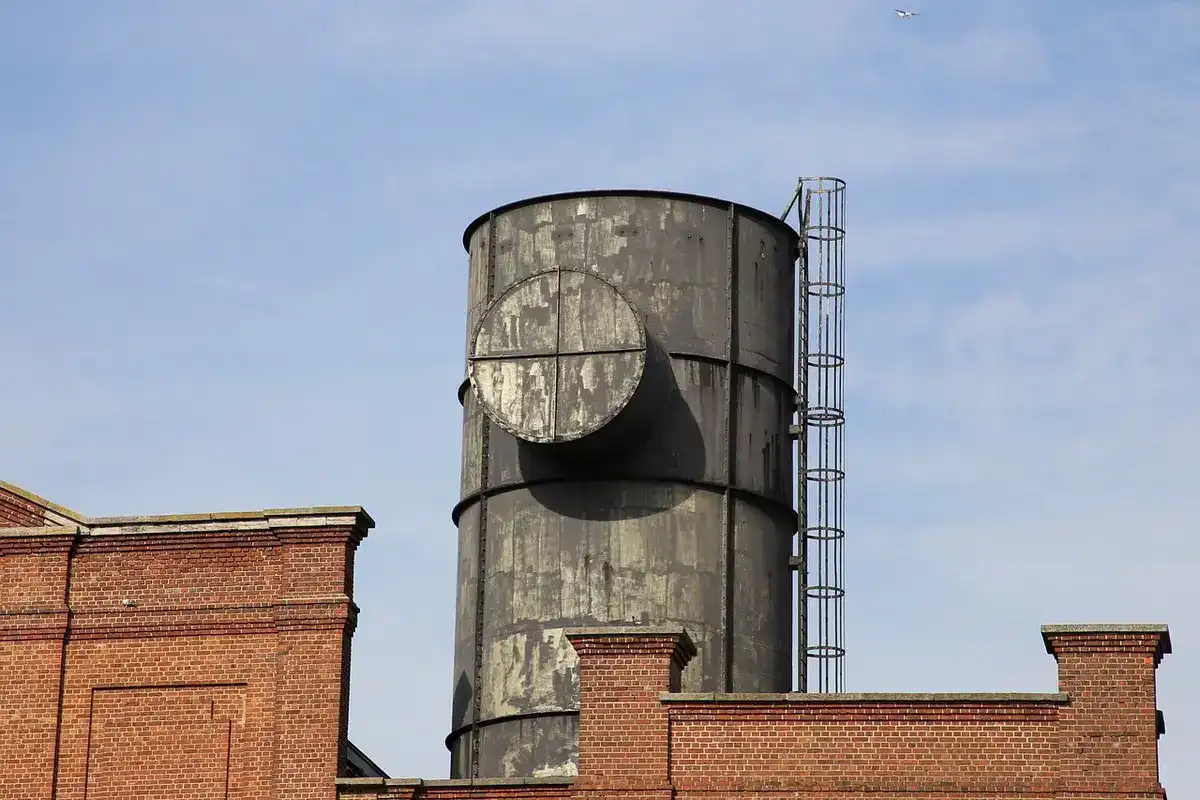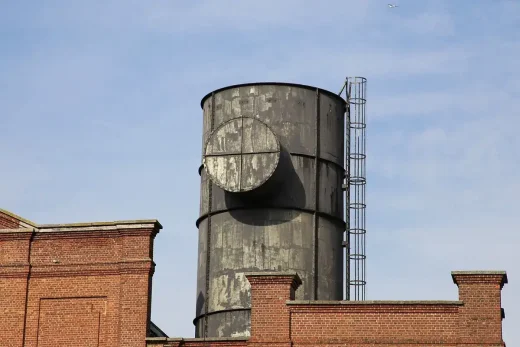Building with water, Cartage tanks in Edinburgh, High-mineral content groundwater softener advice
Building with Water: Cartage Tanks in Edinburgh
31 January 2024
Water plays a central role in various aspects of everyone’s lives, and within the construction industry, it’s no different. Although at first glance, water tanks might simply appear as storage vessels, they serve an important, often catalysing role in different areas such as farming, transport and construction. Particularly in settings like Edinburgh where the weather can be unpredictable, cartage tanks provide a reliable water supply.
Water Cartage Tank Overview
Water cartage tanks are specifically designed for storing and transporting large volumes of water. They’re typically robust to withstand varying conditions during the transport process.
In short, these tanks ‘cart’ or transport water from one location to another. It’s particularly useful when there’s a need for significant volumes of water in remote areas, off-the-grid locations or construction sites.
To cater to varied demands, you’ll find these tanks available in different shapes and sizes – from compact slimline models ideal for city dwellings, larger round tanks perfect for rural landowners and farmers or modulated variations that can be tailored based on unique requirements.
Significance of Water Tanks
Water is invaluable, yet in rainy regions like Edinburgh it falls readily from the sky. Water tanks allow the capture and storage of rainfall, providing a sustainable supplement to standard water supplies. When drought or infrastructure disruptions strike, these reserves ensure resilience.
Beyond backup assurances, tanks confer efficiency. Harvested rainwaters spare municipal reserves for drinking and cooking, instead servicing gardens, toilets and greywater needs. This eases strain on treatment plants while curbing energy demands — an important step toward carbon neutrality.
Whether backing up drought-stricken enterprises like agriculture, or maximising sustainability in construction projects, water tanks provide. Be it a remote farm or right in central Edinburgh, strategic rainwater reserves hedge risks from shifting climate and weather patterns.
Learn About Slimline Water Tanks
Slimline water tanks are a popular choice, especially in areas where space is limited. Their slim design fits effortlessly into narrow spaces but still provides effective water management solutions.
These tanks typically feature high-quality plastic or polyethylene construction that equates to durability, longevity and minimal maintenance requirements.
Another key benefit of slimline tanks lies within their flexible design. This design-defining characteristic allows them to be tailored based on precise customer requirements; whether you’re keen on wall-mounted designs for vertical space-saving or you require it sized perfectly to fit into an awkward corner- customisation possibilities are plentiful. Keep reading to learn more about slimline water tanks.
Different Types of Tanks
Depending on your needs and preferences, there’s a considerable range of tanks available – including cartage tanks, slimline models designed for domestic use, large round tanks for commercial or agricultural use, underground tanks offering discreet placement, through to modular designs providing flexibility.
Each type has its unique set of benefits. For instance, slimline models are perfect for smaller city dwellings; larger round tank models tend to have higher storage capacity and hence are apt for rural settings.
The choice essentially comes down to individual factors such as your water requirements, space availability, access convenience and visual appeal preference.
Tank Material Choice
Where there’s a variety of tank types to choose from, there’s also a wide range of materials available too. These include polyethylene, concrete, steel and fibreglass among others. When trying to make your house more eco-friendly, the tank material you choose can make a meaningful impact.
Polyethylene, also commonly known as plastic, is the most popular choice. It’s lightweight, strong and resists both impact and weathering. Of course, its affordability is another key advantage.
Alternatively, materials like concrete are an excellent choice for underground tanks while steel tanks might fit well if you’re after a sturdy and durable option. Again, it’s down to your individual needs to decide what material would serve best while keeping environmental friendliness in mind. Some materials have less embodied energy and are easier to recycle at the end of life.
Using Truck Water Tanks
Truck water tanks come particularly handy when there’s a need to move large volumes of water across distances. Often utilised in construction sites or farms, these truck-mounted solutions provide an easy way to distribute water wherever necessary.
They usually come with advanced features like spray bars for efficient distribution, baffles for stability during transport and valves for controlling water flow.
Their applications extend beyond mere transport; they can be used for dust suppression on construction sites or could facilitate emergency fire control measures- making them incredibly versatile assets not only in Edinburgh but globally too.
Water Transport With Tanks
The efficiency of water transport with tanks can greatly enhance industries such as agriculture and construction especially where supply disruptions could entail substantial cost implications and time delays.
Beyond just cartage, water transporting solutions also contribute towards efficient management of resources whether it’s using tank-stored rainwater or delineating potable from non-potable water supplies effectively.
This helps in promoting sustainable practices – a crucial aspect amid growing ecological concerns today.
Maintenance of Water Tanks
Diligent maintenance is key for water tanks to function properly and enjoy long lifespans. This encompasses routine checks for leaks, ensuring seals are tight, regular interior cleaning, and clearing debris around the tank area that could contaminate water.
Users should also monitor water quality – if there is discoloration or foul smells, an immediate cleaning is in order. One should consult local regulations as well, as some areas mandate annual servicing or specific cleaning protocols.
Sustainable Practices in Construction
Incorporating sustainability into construction assists tremendously in mitigating negative environmental impacts while boosting efficiency. The use of cartage tanks is one such practice. It facilitates responsible water stewardship – collecting rainwater for later use or efficiently transporting bulk quantities to remote regions.
Further, utilising harvested rainwater instead of energy-intensive public resources reduces one’s ecological footprint. Today most manufacturers adhere to eco-friendly production methods that minimise manufacturing pollutants, adding another layer of sustainability.
Troubleshooting Common Issues
Typical water tank troubles can often be fixed with some basic troubleshooting. For instance, if water levels fail to rise even with ample rain, the tank’s inlet pipe or downpipe may need checking for clogs. Malfunctioning pumps can signify electrical problems or sediment accumulation inside the pump itself.
When attempting troubleshooting, safety should always come first. More complex issues warrant calling in professional assistance, which local tank suppliers can typically provide. Suppliers on websites like this also offer comprehensive troubleshooting guides on common problems.
Tank Regulation and Compliance
There are various aspects of regulation and compliance pertaining to water tanks that users must adhere to. These regulations span from instalment guidelines such as setback from property boundaries & overhead power lines or proximity to driveways and roads; through to water quality standards.
It’s advisable to contact your local council or water authority for precise information related to your specific location and type of tank. Compliance ensures not only proper functioning but mitigates likely environmental risks too which is essential when you’re implementing sustainable practices.
Building with water tanks in Edinburgh Summary
Cartage tanks are indispensable tools within construction, agriculture and other industries due to their utility in water storage and transport. From the huge variety of types, sizes and materials to the numerous associated advantages- their usage can be moulded to fulfil diverse requirements.
However, notwithstanding its benefits, it’s prudent to remain aware of key considerations such as installation procedures, maintenance, troubleshooting issues and complying with regulations. Once these aspects are well managed, you can experience the full extent of benefits offered by your water cartage tank.
Comments on this guide to Building with Water: Cartage Tanks in Edinburgh article are welcome.
Edinburgh Architecture
British Medical Association HQ Edinburgh
12 ways homeowners can detect hidden water leaks
Comments on this guide to Building with Water: Cartage Tanks in Edinburgh article are welcome.





